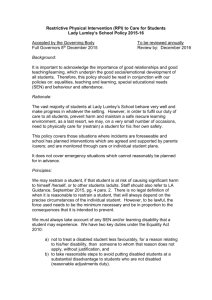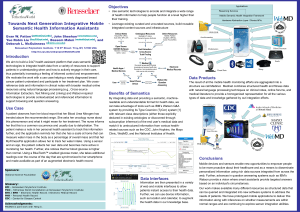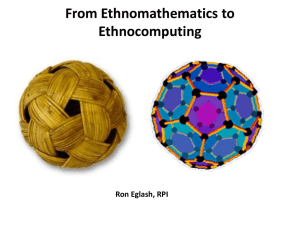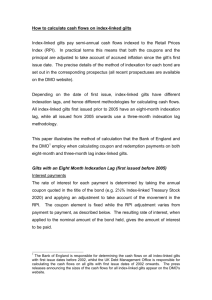Major Areas of PhD Research - Rensselaer Polytechnic Institute
advertisement
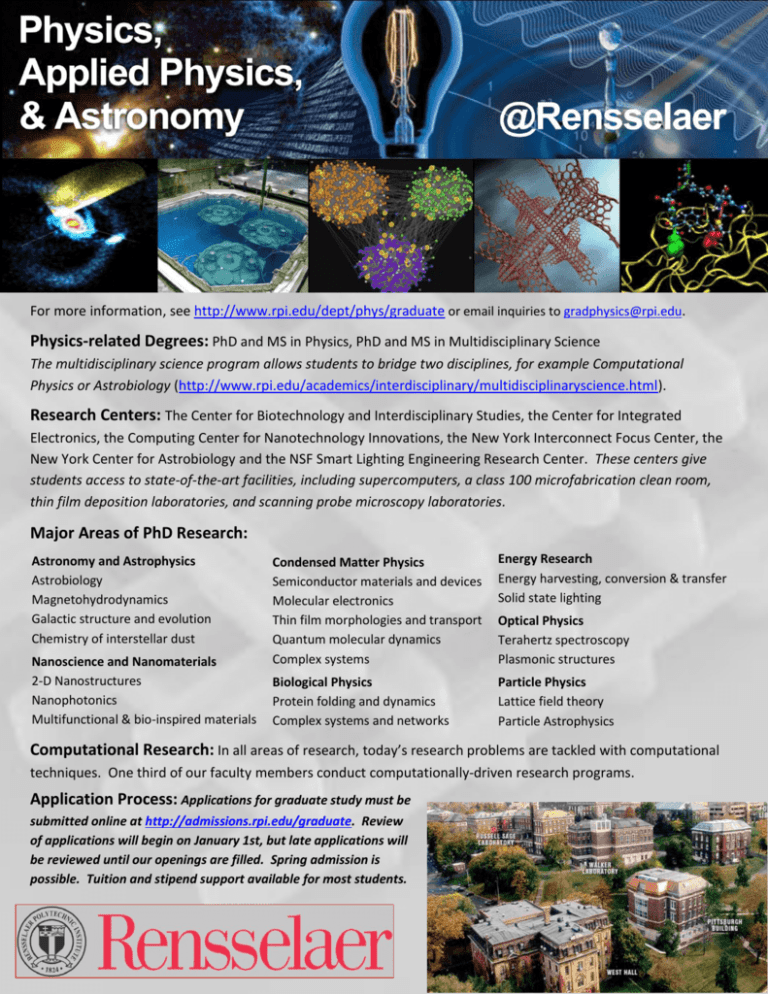
For more information, see http://www.rpi.edu/dept/phys/graduate or email inquiries to gradphysics@rpi.edu. Physics-related Degrees: PhD and MS in Physics, PhD and MS in Multidisciplinary Science The multidisciplinary science program allows students to bridge two disciplines, for example Computational Physics or Astrobiology (http://www.rpi.edu/academics/interdisciplinary/multidisciplinaryscience.html). Research Centers: The Center for Biotechnology and Interdisciplinary Studies, the Center for Integrated Electronics, the Computing Center for Nanotechnology Innovations, the New York Interconnect Focus Center, the New York Center for Astrobiology and the NSF Smart Lighting Engineering Research Center. These centers give students access to state-of-the-art facilities, including supercomputers, a class 100 microfabrication clean room, thin film deposition laboratories, and scanning probe microscopy laboratories. Major Areas of PhD Research: Astronomy and Astrophysics Astrobiology Magnetohydrodynamics Galactic structure and evolution Chemistry of interstellar dust Nanoscience and Nanomaterials 2-D Nanostructures Nanophotonics Multifunctional & bio-inspired materials Condensed Matter Physics Semiconductor materials and devices Molecular electronics Thin film morphologies and transport Quantum molecular dynamics Complex systems Energy Research Energy harvesting, conversion & transfer Solid state lighting Biological Physics Protein folding and dynamics Complex systems and networks Particle Physics Lattice field theory Particle Astrophysics Optical Physics Terahertz spectroscopy Plasmonic structures Computational Research: In all areas of research, today’s research problems are tackled with computational techniques. One third of our faculty members conduct computationally-driven research programs. Application Process: Applications for graduate study must be submitted online at http://admissions.rpi.edu/graduate. Review of applications will begin on January 1st, but late applications will be reviewed until our openings are filled. Spring admission is possible. Tuition and stipend support available for most students. Faculty Research Interests Professor Angel E. Garcia: Theoretical and computational aspects of the structure, dynamics and stability of biological molecules. http://origami.phys.rpi.edu Professor Joel Giedt: Study of strongly interacting systems beyond the Standard Model of particle physics using lattice gauge theory methods, including supersymmetric gauge theories and models of compositeness at high scales. http://www.rpi.edu/~giedtj/ Professor Gyorgy Korniss: Modeling collective phenomena and dynamics in complex networks. Applications range from opinion dynamics and influencing in social networks to transport, flow, and cascading failures in communication, information and infrastructure networks. Some efforts include collaborations with researchers at the Social Cognitive Network Academic Research Center (SCNARC, http://scnarc.rpi.edu/). http://www.rpi.edu/~korniss/ Professor Kim M. Lewis: Molecular electronics, Electron transport in molecules and nanostructures; scanning probe microscopy techniques; materials and device characterization using low-temperature techniques with magnetic fields. http://www.rpi.edu/~lewisk2 Professor Shawn Lin: Photonic crystals, plasmonics, nanophotonics, silicon photonics, solid state lighting, solar energy applications. http://www.rpi.edu/~sylin/ Professor Toh-Ming Lu: Materials physics, thin film morphology and texture, nanostructures for energy and electronics applications. http://www.rpi.edu/~lut/ Professor Vincent Meunier: Theory, modeling and computer simulation in nanoscience, including energy storage, electronic transport properties and materials by design development. Current activities focus on low dimensional systems such as graphene-based materials and selfassembled structures on surfaces. http://www.rpi.edu/~meuniv Professor Heidi Newberg: Structure and evolution of the Milky Way galaxy using stars as tracers; n-body simulations using Volunteer Computing with MilkyWay@home; large surveys including SDSS and LAMOST; the density distribution of dark matter in the Milky Way. http://milkyway.cs.rpi.edu/milkyway/; http://lamost.us/legue/; http://www.rpi.edu/~newbeh/ Professor Peter Persans: Optical and structural properties of amorphous, nanocrystalline, and quantum dot semiconductor materials. http://www.rpi.edu/~persap/ Professor Wayne Roberge: Evolution of ices in the interstellar medium and solar nebula; computer simulations of multifluid, magnetohydrodynamic (MHD) shock waves; analytic and numerical methods for multifluid MHD; physics of interstellar dust. http://www.rpi.edu/~roberw/ Professor Michael Shur: THz electronics. Physics of semiconductor materials and devices. Physics of color rendition. Deep Ultraviolet Light Emitting Diodes. http://www.rpi.edu/dept/phys/faculty/profiles/shur.html Professor Humberto Terrones: Computational electronic structure of low dimensional systems, including layered materials. His interest is in bridging knowledge gaps between experimentally available data and information that can be obtained theoretically based on the atomic structure of those materials. Professor Gwo-Ching Wang: Growth mechanism of oblique angle deposited nanostructures and thin films for solar cell and hydrogen storage. Development of reflection high energy electron diffraction (RHEED) surface pole figure technique to study texture evolution and structures of nanostructures and thin films. http://www.rpi.edu/~wangg/ Professor Christian M. Wetzel: Electronic band and defect structure of wide band gap semiconductor materials and devices for energy efficiency by means of epitaxy and optical spectroscopy. This work supports the Smart Lighting Engineering Research Center. http://www.rpi.edu/~wetzel/ Professor Douglas Whittet: Origin and evolution of dust, ices and organic molecules in the interstellar medium; organic inventories of protoplanetary disks; infrared astronomy; astrobiology and the origins of habitable planets. http://www.origins.rpi.edu/; http://douglaswhittet.net/ Professor Ingrid Wilke: Ultrafast and Terahertz Spectroscopy. Research on sources and detectors of terahertz (THz) radiation. Investigation of dielectric properties of materials at THz-frequencies. http://www.rpi.edu/~wilkei/ Professor Masashi Yamaguchi: Structural and electronic dynamics in condensed matter; acoustic, thermal, and electric transport in nanoscale materials; THz spectroscopy of advanced materials; and THz science and technology. http://www.rpi.edu/~yamagm/ Professor Shengbai Zhang: First-principles structural and electronic properties of a broad range of solid-state materials from crystalline, amorphous semiconductors, metals, to various nanostructures. http://www.rpi.edu/~zhangs9/ Department of Physics, Applied Physics & Astronomy, Rensselaer Polytechnic Institute th 110 8 Street, Jonnson-Rowland Science Center 1C25, Troy, NY 12180 Phone: 518-276-6310 or E-mail: gradphysics@rpi.edu

